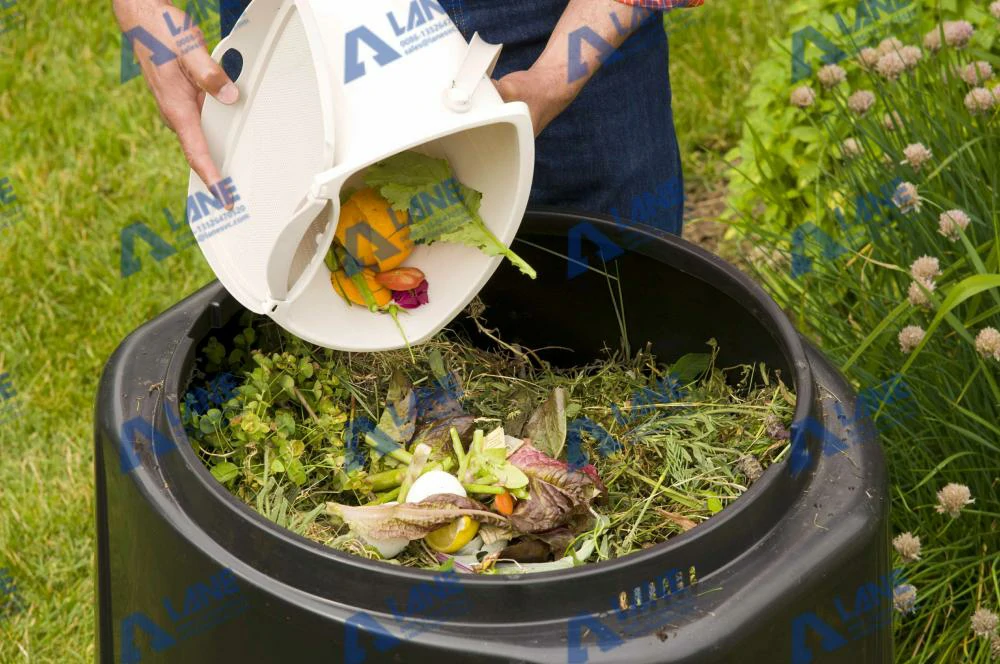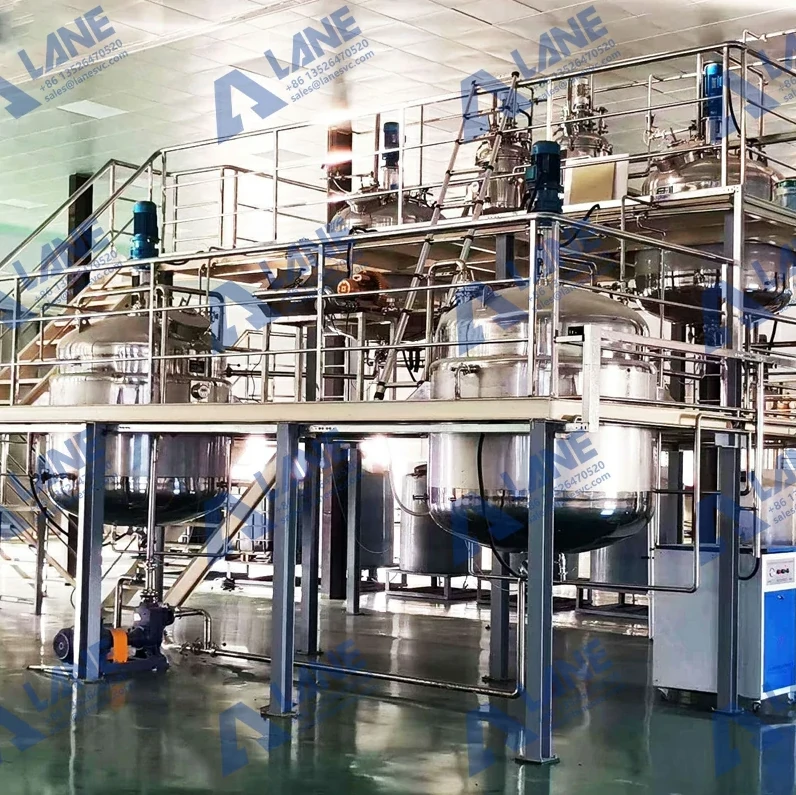
Food Waste Liquid Fertilizer Plant: Revolutionizing Sustainable Agriculture
In the modern agricultural landscape, a Food Waste Liquid Fertilizer Plant is no longer a luxury—it’s a necessity. With growing concerns over food waste, soil degradation, and the environmental impact of synthetic fertilizers, innovative solutions are emerging to transform food residues into nutrient-rich liquid fertilizers. These plants not only address waste management but also provide farmers with a sustainable source of high-efficiency fertilizers that promote plant growth and soil health.
At LANE, we specialize in designing and manufacturing cutting-edge Food Waste Liquid Fertilizer Plants, combining advanced technology, efficiency, and user-friendly operations. Our systems are tailored for both small-scale farms and large industrial setups, ensuring maximum output, minimal energy consumption, and long-term reliability.

Food waste is a major global challenge. According to the United Nations, nearly 1.3 billion tons of food are wasted annually. Improper disposal of this waste leads to methane emissions, pollution, and lost opportunities for resource recovery. A Food Waste Liquid Fertilizer Plant tackles these challenges by:
Recycling Nutrients: Food residues contain essential nutrients such as nitrogen, phosphorus, and potassium. Liquid fertilizers extracted from food waste retain these nutrients, offering a highly bioavailable solution for crops.
Reducing Landfill Pressure: Converting food waste into liquid fertilizer reduces the burden on landfills, mitigating greenhouse gas emissions.
Promoting Sustainable Agriculture: Using liquid fertilizers enhances soil fertility, reduces dependency on chemical fertilizers, and supports eco-friendly farming practices.
The operational principle of a Food Waste Liquid Fertilizer Production Line revolves around converting organic waste into nutrient-rich liquid fertilizer through controlled fermentation and processing. Here’s a detailed breakdown:
| Process Stage | Description | LANE Advantage |
| Food Waste Collection & Pre-Treatment | Raw food waste is sorted, shredded, and homogenized to prepare for fermentation. | LANE machines ensure minimal manual labor with automated feeding systems. |
| Anaerobic Fermentation | Microorganisms break down organic matter in oxygen-free conditions, releasing nutrients. | Our bioreactors maintain optimal pH, temperature, and aeration for consistent quality. |
| Liquid Extraction & Filtration | The fermented slurry is processed to separate liquid fertilizer from solid residues. | High-efficiency centrifuges and filters maximize nutrient recovery. |
| Nutrient Enrichment & Stabilization | Additional micronutrients or bio-enhancers can be added to meet crop-specific needs. | LANE provides customizable formulas to match regional soil requirements. |
| Storage & Packaging | Final liquid fertilizer is stored in tanks or packaged for distribution. | Our plants feature corrosion-resistant storage solutions ensuring long shelf-life. |
A high-quality Food Waste Liquid Fertilizer Plant consists of several core components, each designed to ensure smooth operations and high fertilizer output:
Pre-Treatment Equipment: Includes industrial food waste shredders, belt conveyors, and pulper machines that prepare raw materials for fermentation by reducing particle size and removing contaminants.
Fermentation Tanks: Large-capacity stainless steel fermentation reactors (aerobic or anaerobic) that provide controlled conditions for microbial activity, ensuring efficient decomposition of organic matter.
Mixing & Homogenizing Systems: Stainless steel mixing tanks equipped with high-speed agitators ensure the liquid fertilizer is uniform, stable, and ready for downstream processing.
Filtration & Separation Units: Advanced dual filter systems and centrifugal separators remove solid residues, achieving clear, nutrient-rich liquid fertilizer with consistent quality.
Storage Tanks & Packaging Lines: Corrosion-resistant stainless steel storage tanks are used for hygienic storage, while automated packaging lines enable bulk filling, bottling, or bag-in-box solutions.
Control Systems: Modern PLC and SCADA automation systems continuously monitor and regulate pH, temperature, and nutrient levels, ensuring precise control and reducing manual labor.
LANE’s Food Waste Liquid Fertilizer Plants integrate all these components seamlessly, achieving low energy usage, minimal maintenance, and maximum nutrient recovery rates.

Choosing the right equipment manufacturer can significantly affect the profitability and efficiency of your plant. LANE stands out due to several unique advantages:
Customized Solutions: Every plant is designed based on local food waste composition, plant capacity, and client requirements.
High Nutrient Retention: LANE’s advanced fermentation and filtration technology ensures maximum nutrient recovery.
Energy Efficiency: Automated control systems reduce power consumption by up to 20%.
Durability & Longevity: Industrial-grade materials resist corrosion from acidic and organic compounds.
Technical Support & Training: LANE offers comprehensive installation, operation, and maintenance training.
The liquid fertilizer produced from a Food Waste Liquid Fertilizer Plant is highly versatile and can be applied across different sectors of agriculture and urban development. Its adaptability makes it a valuable solution for farmers, municipalities, and agri-businesses.
(1) Crop Farming and Soil Improvement:
The liquid fertilizer enriches soil with water-soluble nutrients, improving crop yields.
Particularly effective for phosphorus- and potassium-deficient soils.
Farmers report better root development, stronger stems, and improved resistance to pests and diseases.
(2) Greenhouses and Controlled Environment Agriculture (CEA):
In high-value crops such as tomatoes, cucumbers, and peppers, liquid fertilizer provides balanced nutrition.
The controlled application prevents nutrient wastage and allows for consistent plant growth.
A Food Waste Liquid Fertilizer Plant makes greenhouses more sustainable by recycling local organic waste.
(3) Hydroponics and Vertical Farming:
Since liquid fertilizer is already in a soluble form, it is ideal for hydroponic systems.
Helps urban farms reduce costs associated with commercial nutrient solutions.
Supports precision agriculture where every drop of fertilizer counts.
(4) Urban Landscaping and Gardening:
Municipalities use liquid fertilizers to maintain parks, lawns, and roadside greenery.
Provides a sustainable solution for cities looking to reduce chemical fertilizer dependency.
(5) Commercial Agriculture Enterprises:
Large plantations (e.g., rice, maize, sugarcane) can cut down fertilizer expenditure by integrating on-site food waste recycling plants.
LANE’s customized Food Waste Liquid Fertilizer Plants can be scaled to process tons of waste daily, ensuring a continuous supply.
Case Study: Successful Implementation of a Food Waste Liquid Fertilizer Plant
Case 1: Green Harvest Farms, California
Green Harvest Farms, a mid-sized organic farming operation in California, faced two major challenges: rising fertilizer costs and the increasing burden of managing food waste sourced from local supermarkets and restaurants. To address both issues, the farm partnered with LANE to install a customized Food Waste Liquid Fertilizer Plant capable of processing 10 tons of food waste per day. The plant featured automated shredders, stainless steel fermentation tanks, a dual filtration system, and SCADA-based monitoring controls.
Within months, the farm was producing thousands of liters of high-quality liquid fertilizer daily, enough to meet its entire nutrient requirement for vegetables and fruit crops. Farmers noticed healthier soils, faster crop growth, and higher resistance to pests, reducing their dependency on expensive synthetic fertilizers by over 70%. In addition, the project aligned with California’s environmental goals, helping the farm achieve recognition as a regional leader in sustainable agriculture.
Case 2: Urban Waste Management Program, Singapore
In Singapore, where space is limited and waste management is a critical issue, the city launched an initiative to reduce food waste in residential neighborhoods. LANE was chosen to design and implement a modular Food Waste Liquid Fertilizer Plant that could be integrated into an urban hub serving more than 20,000 households. Unlike large rural facilities, this plant had to be compact, efficient, and quiet, yet still capable of processing a diverse mix of kitchen scraps and supermarket discards.
The outcome was a steady production of liquid fertilizer that supplied urban farms, rooftop gardens, and municipal landscaping projects throughout the city. Within the first year, the program diverted over 1,200 tons of food waste from landfills and produced more than half a million liters of fertilizer, contributing directly to Singapore’s “Zero Waste Masterplan.” Beyond its environmental benefits, the project also strengthened community participation, as residents could see their food waste being transformed into resources that nourished the very green spaces they enjoyed daily.

Frequently Asked Questions (FAQ)
Q1: What types of food waste can be processed?
A: Fruits, vegetables, meat scraps, dairy products, and other organic kitchen waste can be used. Pre-sorting is recommended for non-organic contaminants.
Q2: How long does the fermentation process take?
A: Depending on waste type and microbial activity, fermentation typically ranges from 3–7 days. LANE’s advanced reactors can accelerate the process.
Q3: Is the liquid fertilizer safe for crops?
A: Yes. LANE ensures that the final liquid fertilizer is pathogen-free, nutrient-rich, and safe for both edible crops and ornamental plants.
Q4: Can this plant handle seasonal fluctuations in food waste?
A: Absolutely. LANE provides storage and buffer solutions to manage variable input volumes effectively.
Q5: How energy-efficient is the process?
A: Our plants use automated aeration, heating, and pumping systems optimized to reduce energy consumption while maintaining high output.
Environmental and Economic Benefits
Implementing a Food Waste Liquid Fertilizer Plant provides both ecological and economic advantages:
| Benefit Type | Details |
| Environmental | Reduces landfill pressure, lowers methane emissions, prevents water pollution. |
| Economic | Produces cost-effective liquid fertilizer, reduces chemical fertilizer dependency, offers potential revenue from organic waste valorization. |
| Social | Creates local employment, promotes sustainable farming practices, enhances community waste management. |
By transforming food waste into liquid fertilizer, LANE’s plants contribute to a circular economy and sustainable agriculture.
Future Trends in Food Waste Liquid Fertilizer Plants
The industry is evolving rapidly with new innovations, including:
Integration with IoT: Smart sensors to monitor fermentation, nutrient content, and plant health.
Energy Recovery Systems: Converting biogas from fermentation into electricity for plant operations.
Customized Formulations: Tailoring nutrient blends to specific crops or regional soil needs.
Mobile Processing Units: Compact, transportable systems for urban food waste management.
LANE is actively investing in R&D to integrate these trends into future plant designs, ensuring our clients remain at the forefront of sustainable agriculture.
A Food Waste Liquid Fertilizer Plant represents a transformative approach to managing food waste while producing high-quality, sustainable fertilizers. LANE’s innovative designs, energy-efficient operations, and tailored solutions make it an ideal partner for agricultural enterprises aiming to enhance productivity, reduce environmental impact, and achieve long-term sustainability. By investing in a LANE plant, businesses not only recover valuable nutrients but also contribute to a greener, more resource-efficient world.
For more details, please feel free to contact us.
Henan Lane Heavy Industry Machinery Technology Co., Ltd.
Email: sales@lanesvc.com
Contact number: +86 13526470520
Whatsapp: +86 13526470520
Leave a Comment
Latest Posts
LANE has more than 500 successful cases and is committed to providing customers with first-class solutions, high-end machinery and equipment, and one-stop pre-sales, sales and after-sales comprehensive customer service.